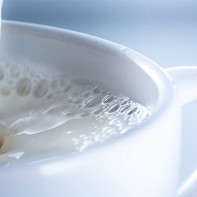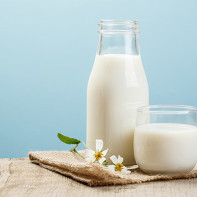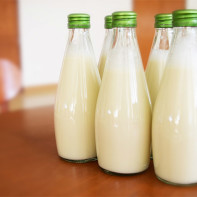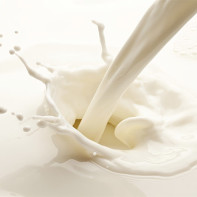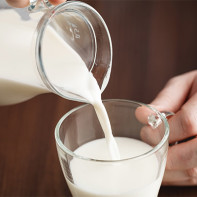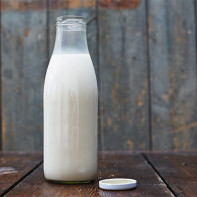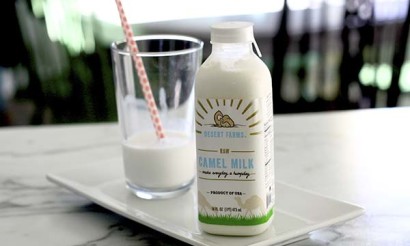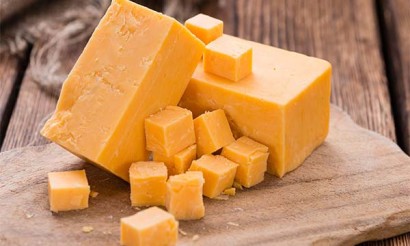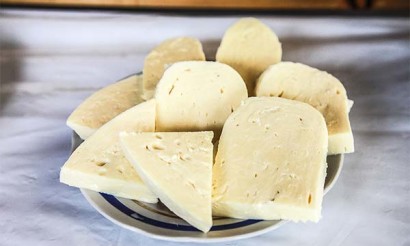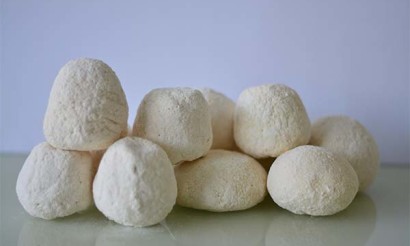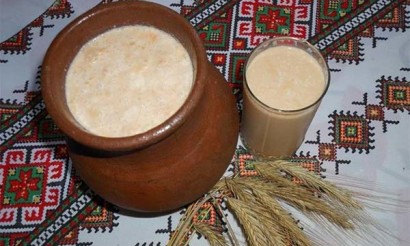Cow's milk: composition, beneficial properties and contraindications.
Milk is an irreplaceable foodstuff. And although physicians are constantly debating its benefits and harms, it still occupies an important place in the diet of both children and adults.
- What kind of milk is there: types
- The difference between whole milk and normalized milk
- Which milk is healthier: cow's or goat's milk
- Composition and Calories
- What is milk good for?
- For Women
- For Men
- When pregnant
- For breastfeeding
- For kids
- The benefits of fresh milk
- Milk powder: benefits and harms
- Can I drink milk to lose weight?
- Milk in Medicine
- Diabetes
- Pancreatitis
- Gastritis
- For the Intestines
- For constipation
- For gout
- For colitis
- For the liver
- For hemorrhoids
- Pri cholecystitis
- Milk-based folk medicine recipes
- Infusion to improve female reproductive function
- Infusion for cough
- Decoction for insomnia
- Gastritis
- Milk in Beauty Therapy
- Face Masks with Milk
- Milk Masks for Hair
- Harm and Contraindications
- How to choose and store milk
- Can I Freeze?
- What is the right way to drink milk?
- Can I Drink with a Hangover?
- Can I drink it on an empty stomach and at night?
- How much you can drink per day.
- Can I Drink Milk During Lent?
- Why Milk is Bitter
- What can be made with milk: Recipes
- Milk Soup with Oats
- Milk soup with potatoes and celery
- Ginger-fruit smoothie
- Can we give milk to animals?
- Interesting facts about milk
What kind of milk is there: types
There are different criteria for classifying milk. First, it all depends on what animal it is obtained from. Although the most common milk is cow milk, goat milk, sheep milk, and in some countries - deer or camel milk are also popular.

Second, milk is classified according to the way it is processed. In this case, there are distinguished:
- Pasteurized milk. During processing, milk is heated to 72° C (this temperature is maintained for 15-20 seconds), then it is cooled. This technology is used to destroy pathogenic microflora. At the same time it allows you to save all the vitamins and minerals, since the heating is done without oxygen. In the refrigerator, such milk is worth 3-4 days.
- Ultra-pasteurized. This technology is heated to 140 ° C. The pouring is done under completely sterile conditions, and the packaging is made absolutely airtight. Thus, all microflora is destroyed, and bacteria cannot get into the milk at any stage of the production process. Some experts believe that these are optimal conditions for obtaining a healthy product. But there are others who consider such milk "dead", because the content of useful substances in it remains questionable.
- Melted milk also undergoes thermal processing, but the technological process is longer. It is heated to a temperature of 85-98 ° C, but it is maintained for about three hours, until the product has a beautiful creamy color. This changes the chemical structure of the product, destroying many vitamins, increasing the percentage of fat content, so that its usefulness is doubtful.
They also distinguish between dried and reconstituted milk. The first is evaporated by a certain technology - it is often used in baby porridge and mixtures. The second is obtained by adding liquid to powdered milk.
What is the difference between whole milk and normalized milk
Whole milk is the product familiar to everyone, in which the original level of fats, proteins, carbohydrates and vitamins contained in the steamed milk is preserved. This does not mean it has not undergone any processing. It may well be pasteurized - this gets rid of pathogenic microbes and increases its shelf life.
The fat content of normalized milk is specifically changed compared to the original product. And these figures are approved by industry standards - it is them that the percentage ratio of fats, proteins and carbohydrates is eventually brought to. Normalized milk is most often pasteurized, but other processing methods are also used, such as sterilization or separation, which artificially increases the fat content of the product.
Which milk is healthier: cow's or goat's milk
In addition to lactose, milk contains casein, which is a specific milk protein. Not all people digest it well, because it can make it difficult to digest food. There are two types of casein - A1 and A2. Interestingly, it is the first type, which is found mainly in cow's milk, that is difficult to digest. But goat milk contains casein of the second type - A2, which does not affect digestion, so this drink can be considered more useful.
In addition, the chemical composition of this product is close to the milk of the nursing mother. That is why even before the advent of modern artificial formulas, if a woman could not establish breastfeeding, the baby was given goat's milk. It is an excellent digestible product with a high concentration of vitamins. Its consumption does not cause heartburn, flatulence, other gastrointestinal problems, so it is more useful compared to cow's milk.
Composition and calories
The energy value of cow's milk depends on its fat content. In a drink with a fat content of 2.5%, the caloric value is just over 60 kcal per 100 g.
As for the chemical composition, it can not be called constant, much depends on the conditions under which the animals are kept. This product contains complete proteins, but more than 80% of them are casein, and albumin and globulin, so important for the immune system, account for less than 1%. In addition, milk contains more than 20 amino acids, and more than eight of them are essential.
Milk contains many vitamins and minerals, almost a complete set of them. Many people know that it is a source of calcium, but sodium is much less in this product. But potassium, magnesium, fluoride, zinc, and rarer substances like vanadium, cobalt, and lithium are also worth mentioning. It also contains B, A and E vitamins and even ascorbic acid.
It is this composition that makes milk good for muscles, blood vessels, bones, and skin. It is used in nutrition and cosmetology.
What is milk good for?
Milk has many beneficial properties. For example, it affects the production of sleep hormone, so it is recommended for insomnia. And also this drink is useful for swelling, as it has a mild diuretic effect, but does not wash out useful substances from the body. It is also recommended to drink milk with infectious diseases and colds, as it contains lactobacilli - natural substances that act as antibiotics.
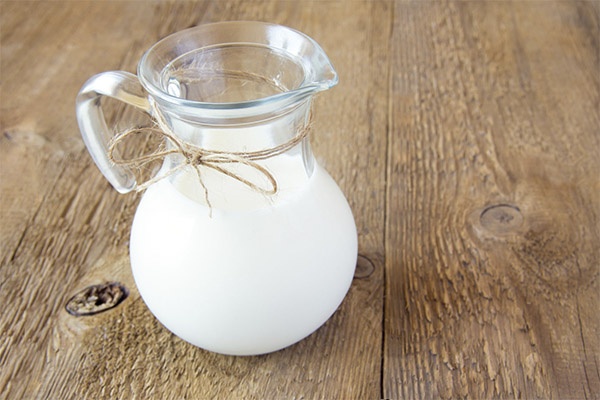
For women
Many women of the fair sex with age face such a disease as osteoporosis, which is caused by a lack of calcium in the body. To avoid this, you should consume milk - the calcium it contains is well absorbed.
Milk will also be useful for those who want to get rid of extra pounds, as paradoxical as it may sound. The fact is that it contains such an enzyme as lipase, and it is needed to break down fats. Of course, in dietetics, it is recommended to consume milk of moderate fat content.
For men
Many people know that members of the stronger sex especially need protein to build muscles. And although it is believed that in order to do this we have to eat meat, in fact we should not forget about milk, because it is a great source of protein. Of course, we are talking about those cases where there is no lactose intolerance.
In addition, men are more likely to suffer from cardiovascular disease, so milk is useful for them because it is a protection against atherosclerosis. The composition of this product includes phosphatides. These are fat-like compounds that take an active part in the metabolic process, regulate lipid metabolism, lower the level of bad cholesterol.
However, studies show that cow's milk produced in large industrial plants can be a source of estrogens, an excess of which leads to prostate disease. So you should either drink farm milk or proportionately reduce your consumption of red meat (it also contains estrogens).
If pregnant
If the expectant mother does not have a problem with lactase production, milk will be a very useful product, because it contains a full range of vitamins. Of course, the amount of some of them is very small, but the concentration of vitamin A and some B substances is very high, but in general, this product will prevent avitaminosis. In addition, it will help make up for a possible deficiency of amino acids, which women face during pregnancy. These substances are needed to build fetal tissues, but the body many of them are not synthesized, so you can get them only from food.
Expectant mothers are very important calcium, so milk can solve the problem of its shortage. In addition, during this period, dental problems often begin, which is associated with the fact that the incoming phosphorus is mainly used for the fetus. Milk enzymes help absorb phosphorus better, so even with the same level of intake, the mother's body will get more of this element, which will have a favorable effect on dental health.
During pregnancy, the use of pharmaceuticals for colds is severely limited, and women with a weak immune system have a hard time at this time. Whey proteins in milk contain immunoglobulins, which are needed to produce antibodies against viruses and germs. So this product will allow the safest way to boost immunity.
When breastfeeding
Contrary to common misconceptions, the consumption of milk has almost no effect on lactation. The fact is that this process depends on the production of the hormone prolactin, and only he determines the amount of breast milk. But, of course, the product is still useful for nursing mothers - for all the above reasons. In addition, cow's milk allows you to normalize the production of insulin, thyroxine and other hormones.
For kids
For babies under the age of one year, cow's milk is contraindicated. There is a high probability of allergy to the protein it contains. The ideal food for children of this age is mother's milk. In extreme cases, specially adapted artificial formula will do.
The first introduction to cow's milk should occur after one year. It is added only to porridge, and it should be a special baby product, enriched with all the necessary vitamins. The same kind of milk can be offered to a child in its pure form already at the age of two. When the baby is three years old, he can drink milk or milk shakes, eat milk porridge and soup with noodles. This way he will get all the necessary amino acids, calcium, etc.
For school-age children, milk is recommended as a snack, which will be much healthier than juice. The more so that today the vitaminized product is packaged in small handy cardboard bags. The main thing is to choose milk without food flavorings and additives. The maximum amount a baby can drink in a day is 100 ml.
The benefits of steamed milk
Any product that has not been thermally processed in terms of nutritional value is considered more useful. And fresh milk is no exception. It contains more useful milk fats and proteins, vitamins and minerals than pasteurized product. Accordingly, all the above-mentioned useful properties are strengthened.
However, everything is not so unambiguous with this product. The fact is that fresh milk contains more lactose, and there are many harmful microorganisms, because the cow's udder does not pass any antibacterial treatment. In addition, much depends on the health of the animal, because with steamed milk you can get such dangerous pathologies such as tuberculosis or brucellosis. Finally, you need to know what the cow was fed, otherwise there is a risk that the drink will contain all the antibiotics and hormones from the feed. So, steamed milk will only be useful if it is bought from trusted owners who look after the health of their animals.
Dried milk: benefits and harms
Quality dried milk retains almost all of the beneficial substances that have been listed above. However, the content of some vitamins (such as ascorbic acid) is reduced. Nevertheless, powdered milk is useful because it has as much protein and calcium as regular milk. This is especially true for the pasteurized product - after heat treatment its composition is close to the powdered variety.
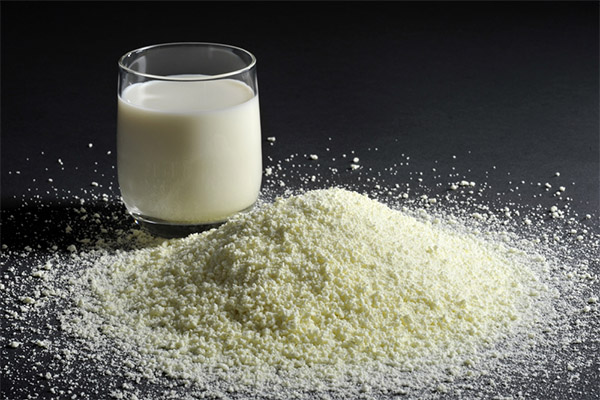
So that high-quality powdered milk, provided it is stored properly, is not harmful.
Can you drink milk while losing weight?
It is possible to drink milk when losing weight - as mentioned above, it contains an enzyme that breaks down fats. Moreover, there is a dairy mono-diet, which allows you to lose a few extra pounds. It differs from other mono diets in that the body at this time receives healthy protein, fats and a full range of vitamins, which no other product can provide. Not to mention calcium, which affects directly the process of burning fat. Lack of this element can even lead to the fact that with a low-calorie diet, there will be no weight loss.
The milk mono diet is designed for 7 days, no more. Milk can be consumed from the morning until 20:00. On the first day you should drink no more than a glass of warm drink every two hours, on the second day the total amount of drink increases, you should drink it every hour and a half, and on the third day - every hour. On the next four days of the diet, the break is only half an hour. It is clear that such a diet is suitable only for very healthy people, and before applying the diet, it is necessary to consult with your doctor.
Milk in Medicine
Milk in medicine is seen as an important part of a healthy diet, and in some cases, as medicine.
In Diabetes Mellitus.
In this disease, the amount of carbohydrates contained in the product is of fundamental importance. In this case, the norm at one meal is 45-60 g, while a glass of milk contains only 12 g. So this product in moderation is a relatively safe source of protein and calcium for diabetics.
Important: The glycemic index of milk is 32 units.
For pancreatitis.
It is believed that whole milk in pancreatitis creates too much load on the pancreas, so as an independent product it should not be consumed. Porridge is cooked with low-fat milk diluted by half with water.
Gastritis
With gastritis with high acidity, milk is even considered to be something like a medicine. The fact is that once it enters the stomach, it congeals, and this allows it to take up most of the stomach acid, reducing temporarily its overall level. So warm (but not hot) milk with gastritis can relieve an attack of pain. But to get carried away with this remedy is not recommended.
For the intestines
On its own, milk does not help to fully improve digestion. But milk sugar (lactose) generally creates a favorable environment for the development of beneficial microflora, which allows you to fight pathogenic microbes. When properly consumed, the product can even inhibit fermentation and putrefactive processes in the intestines. However, caution should be exercised - if you are lactose intolerant, it can provoke severe inflammatory diseases.
In case of constipation.
Whole milk will only aggravate the problem if you consume it as a separate drink. But it is possible to prepare porridge with milk. It may be more helpful to use fermented milk products.
Gout
In this disease, foods containing purines are restricted. Milk does not contain them much, so it can be included in the diet, and even should be, because it is believed that it helps to eliminate purines from the body. Especially when the amount of meat is limited to a minimum, this product becomes a valuable source of protein. Of course, everything depends on tolerance. With a lack of lactase enzyme milk can be replaced by yogurt.
Colitis
This is a severe inflammatory bowel disease, which, even in remission, requires a fairly strict diet. Cow's milk is completely excluded from it. When the above-mentioned protein A1 is digested, a substance called BKM 7 (beta-casomformin) for short is released. It has no effect on healthy people. But if there is even slight damage to the intestinal walls, it worsens their condition and increases inflammation because of its oxidizing properties. So you will have to give up milk.
For the liver
For liver disease, diet number 5 is recommended. It allows the use of milk of moderate fat content. It can also be used to prepare dishes - porridges and soups, which can normalize the liver.
When hemorrhoids
In this disease, sour milk products are recommended because they are better absorbed by the body. Whole milk, on the other hand, can cause additional digestive problems.
In cholecystitis
In this disease, low-fat milk can be consumed on its own and as part of approved dishes, but only in moderation and provided that the pathology is not accompanied by the appearance of concrements.
Recipes of folk medicine based on milk
There are many folk medicine recipes based on milk. For example:

Infusion to improve female reproductive function
Add 3-4 stamens of saffron to a glass of hot milk and insist until it cools to an acceptable temperature. The drink is consumed for a rejuvenating effect and normalization of hormonal balance.
Cough Infusion
In a glass of freshly boiled milk, add a small onion chopped on a grater and stir thoroughly. Insist the remedy for 10 minutes, then drink it while it is warm. Drink slowly, stretching the process for 10-15 minutes.
Decoction for insomnia
In a glass of milk, add very little (literally a tip of a knife) spice - grated nutmeg, then bring this composition to a boil. Wait until it cools down, and drink it warm half an hour before going to sleep.
With gastritis
Milk with 1 tsp of honey is considered an excellent remedy for gastritis with hyperacidity.
Milk in cosmetology
This natural product in cosmetology is used to nourish the skin, has a mild whitening and rejuvenating effect (just remember the legendary baths of Queen Cleopatra). From this product, diluted with boiled water, make cosmetic ice, which wipe the skin of the face and decollete. Use it to strengthen the hair.
Face Masks with Milk
There are many recipes, choose a specific version taking into account the peculiarities of the skin:
- Mask for mature skin against age spots. To prepare it, you will need 1/2 cup milk, 2 tbsp. oat flakes, a pinch of borax powder (available in pharmacies and online stores). The milk is heated, pour oat flakes, wait 10-15 minutes for them to swell, then add the borax powder and stir well. The remedy is applied to clean skin for about 15-20 minutes. Then it is rinsed with water at room temperature. Mask should be made no more than twice a week. Means for the course of 12 procedures.
- Rejuvenating mask. Take 1 tbsp of flour, mix with fresh egg yolk and add boiled milk to create a mixture of the consistency of thick sour cream. The mixture is applied on a cleaned face for 15-20 minutes. After that rinse with cool water, in which the juice of a few lemon slices is squeezed - it gives an additional whitening effect.
- Moisturizing mask. For its preparation take 1 tbsp. fat-free cottage cheese, add 2 tbsp. boiled milk and 1 tsp. liquid honey. The mass is mixed and applied to the skin for about half an hour, then washed off with non-hot water.
Effective masks are also made with goat's milk, they are ideal for dry skin.
Hair Masks with Milk
Such remedies help to cleanse the scalp and strengthen the hair. For example:
- Cleansing mask. Take 2 tsp. of fine sea salt for 100 ml. of milk, mix the ingredients thoroughly and the resulting product is applied to the paranasal areas of the skin, as well as the entire length of the hair. Leave the mask for 4-7 minutes. This remedy allows you to normalize the activity of the glands, get rid of dandruff and strengthen the curls.
- Restorative mask. For it, you can take both sour and fresh milk - 3 tbsp. The same amount of take burdock oil, add 1 capsule of vitamins A and E and a couple of drops of essential oils of lavender, ylang-ylang and chamomile. It is recommended to warm the vegetable oil in a water bath, and then mix with other ingredients. The mask is applied to dry hair, cover the head with plastic wrap and a terry towel. After 20 minutes, it is washed off with a normal shampoo.
Harm and contraindications
Milk, when consumed inordinately, can cause digestive problems and even lead to cardiovascular disease, especially if you prefer exclusively fatty varieties.
There are people for whom milk is contraindicated. We are talking about such cases:
- Lactose intolerance, which indicates a lack of the corresponding enzyme. If after drinking milk, a person feels discomfort in the stomach, suffers from flatulence or diarrhea, this product should be abandoned.
- The need for planned surgery or immediately after it, so as not to burden the pancreas.
- Allergies to cow's milk protein.
- Diseases of the liver. At the same time, such pathologies are a relative contraindication. If after a glass of milk there are no unpleasant symptoms, then in limited quantities you can consume the drink.
- The presence of kidney stones. But this applies not even so much to the milk itself, as to its combination with other products. In such cases, compounds are formed that stimulate the formation of kidney stones. For example, under the ban will be tea with milk, because the chemical reaction between tannins and calcium leads to these very consequences.
Sometimes it is not even about the rejection of milk, but about limiting its quantity - for example, one glass a week. But it is still better to replace this drink with nonfat kefir or yogurt, especially if we are talking about diseases of the gastrointestinal tract.
How to choose and store the milk
In the supermarket you need to study very carefully the information on the package of the product. If it is written that it is whole milk, it indicates that the product is natural (just that it has undergone heat treatment). However, in today's environment it is more common to find a mixture of whole and reconstituted milk. This does not indicate that the product is of poor quality. But it is an indicator that dried milk was used in the production, and it contains fewer useful substances.
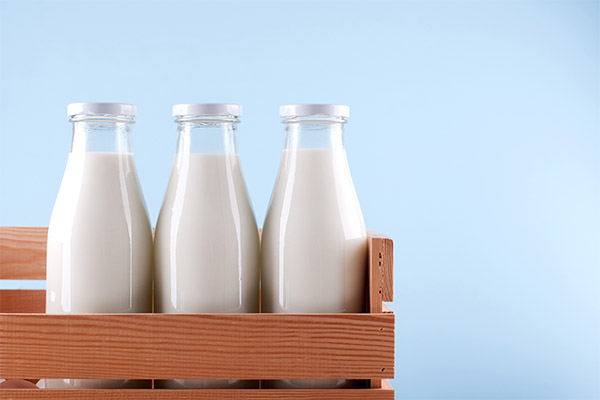
Before buying, you should look at the date of production of the product and its expiration date. You should also check that it has no artificial additives and preservatives.
When choosing, you should pay attention to the fat content of the product. It is clear that if the milk was produced industrially, then this indicator is printed on the package. With homemade milk, everything is more complicated. In this case, you usually look for a reliable supplier, but you have to determine the fat content of milk from a particular cow by experiment. That is, you can buy a jar of milk from the owner and leave it for 7-8 hours until morning or evening - already by the thickness of the layer of cream formed on top you can understand whether the product is fat enough.
You can even measure the approximate percentage of fat content. To do this, use a ruler to measure the level of milk in the jar (it is taken as 100%) and the thickness of the resulting layer of cream, and then calculate its proportion.
Pasteurized milk, even if the package with it has not been opened, should be kept in the refrigerator. If the package is intact, then focus on the expiration date specified by the manufacturer. Opened package (remember this always!) should be used within three days.
Fresh milk, as experts assure, can be stored in the refrigerator only for two days. After boiling, it can be kept in these conditions for up to three days. As for room temperature, fresh milk is allowed to keep for a short time - no more than 10 hours. After boiling, this period increases, but only by a few hours. Note, however, that goat milk spoils just as quickly as cow's milk.
When buying pasteurized milk, pay attention to the packaging. Usually polyethylene bags do not keep the product for long. Plastic bottles are not considered a good choice because they give the drink a strange taste and smell. Glass bottles are a good option, but they are more expensive. So the optimal packaging in terms of storage is a cardboard bag.
Can I freeze
Fresh milk can be frozen for later use in food or cooking. Residents of the Far North have such experience. Practice shows that the frozen milk in the freezer retains all its useful properties.
It is important to use clean and dry containers for freezing. This is the only way to preserve the useful properties of milk. For this purpose, ice molds can be used - in summer such milk cubes can be thrown into tea or coffee, they are also suitable for cosmetic procedures. If you are interested in freezing for the preparation of some dishes and desserts, then you should opt for polyethylene bags equipped with a Zip-Lock clasp.
Some housewives freeze the product in plastic bottles. But when using this method, you need to be careful, because when the milk freezes, it can expand in volume and damage the plastic. So do not fill bottles up to the neck. Moreover, before you close it with a lid, such a container should be squeezed, completely squeezing out all the air.
Properly frozen milk should be used for drinking within 4-6 weeks. Even in the second month of storage it begins to lose all its useful properties, and in the third month the cold even destroys the protein compounds.
Frozen milk can be thawed within 2 days in the refrigerator or much faster in the kitchen at room temperature. You can also speed up the process by heating it in a water bath (but only on low heat).
Frozen milk with high fat content is a bit stratified during normal thawing. But if it is stirred and then brought to the boil in a saucepan, it can then be safely drunk and used in cooking - for example, to make cocktails and desserts with it.
Pasteurized milk often spoils when defrosted. However, there is no point in freezing it, since this product can always be bought in the store.
How to Drink Milk Properly
To get the benefits of drinking milk, you need to drink it correctly, then it will be well digested without causing abdominal pain and diarrhea. The rules are as follows:
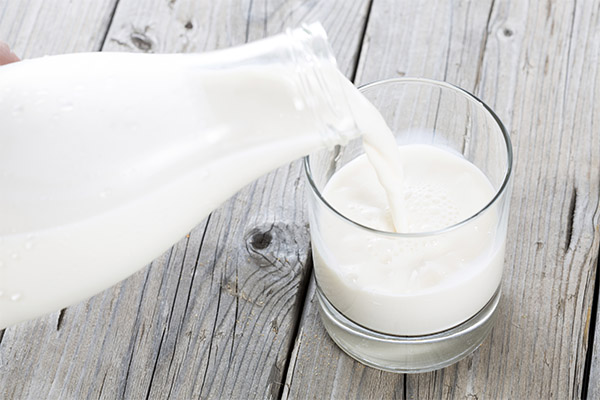
- Since doctors believe that milk is a product that should not be mixed with other fats and proteins, it is better to consume it separately from everything else. The only exception to this rule is whole-grain porridge cooked with milk.
- It is best to drink milk exactly in the middle between two meals, so that there is an interval of at least two hours from both the previous and the next meal. Otherwise, the risk of bloating and flatulence is greatly increased.
- Milk should be neither cold nor hot, because in both cases it is worse for digestion and only harms the mucous membrane of the stomach. It is better to drink milk warm.
In Ayurvedic medicine, it is believed that this drink is better absorbed when spices are added to it. In India, these include cinnamon, ginger and the closely related turmeric, as well as nutmeg. For example, if you add 1/3 tsp of turmeric to a glass of heated milk, such a drink is much better absorbed by the body and even promotes weight loss.
Is it possible to drink it with a hangover?
Some people believe that milk neutralizes alcohol. In fact, when a hangover has already occurred, that is, in fact, alcoholic intoxication, you need to flush out the toxins faster. Milk is not always well digested, it will increase the load on the pancreas, and the tryptophan it contains will slow the excretion of toxins. So it is better not to drink this drink during a hangover, and drink water to replenish fluid loss.
Can you drink it on an empty stomach and at night?
Today doctors believe that healthy people, whose bodies normally absorb lactose, can drink milk in the morning, during the day, and before going to bed. A moderation should be observed. On an empty stomach, it is recommended to drink warm milk, in which literally a pinch of cinnamon is added - this will provide the body with energy. But the breakfast can take place not earlier than an hour after this.
You can drink only low or medium-fat milk at night. With this drink, the body will get calcium, fats and proteins, which are necessary for normal hormone production. In addition, the constituent substances in milk have a beneficial effect on the nervous system. So a glass of this drink will help to relax and provide a healthy sleep, without harming the figure (if, of course, you drink it an hour before going to bed). But this does not apply to those who have health problems - we are talking about people with lactose intolerance - for them, milk at night will only hurt, so it is better to replace it with kefir or yogurt.
How much you can drink per day.
It is not recommended for adults to drink milk often and in large quantities. It is believed that more than 200-300 ml (that is, 1-1.5 glasses) a day should not be consumed. But for some people even this amount may be too much. Therefore, within the specified volume, each person can experimentally establish for himself how much milk he can drink. You can start with 100 ml, if after this feeling will be good, no problems with the stomach, you can increase the dose.
Can I drink milk in Lent?
During Lent, it is not allowed to consume food of animal origin. Therefore, cow's and goat's milk is forbidden. However, they can be replaced by so-called plant-based milk - let's say, soy, almond or coconut milk, especially since these drinks contain a lot of protein and other useful substances - vitamins and minerals. And they are healthier, because they have no cholesterol.
However, during pregnancy and lactation Church rules are relaxed a little, and milk can be eaten in reasonable quantities.
Why Milk is Bitter
In fact, milk is bitter when it begins to spoil. But this applies only to pasteurized product. The fact is that pasteurization eliminates only lactic acid bacteria, and the oily acid bacteria remain, because they tolerate this temperature treatment calmly.
When souring ordinary, not pasteurized milk will not be bitter, because it contains lactic acid microorganisms that inhibit the activity of other bacteria.
What you can make with milk: recipes
On the basis of milk, various drinks are prepared - for example, some kinds of coffee, smoothies and smoothies. But, of course, there are many more uses for this product. For example:
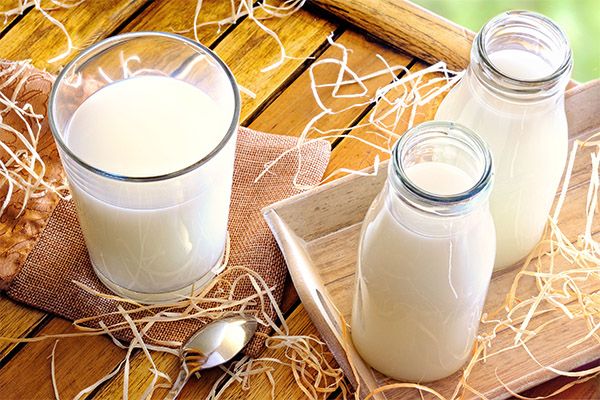
Milk soup with oatmeal
To prepare it, you will need 80 g of groats, 200 ml of milk, 300 ml of water, 30 g of frozen green peas, 1 tsp of butter. Boil oats separately, then grind in a blender until puree, mix with hot milk and boiled green peas, add salt and bring to the boil again. Serve with greens and croutons cooked in butter.
Milk puree soup with potatoes and celery
Need 4 large potatoes, 1 small celery root, 1 onion, 1 carrot, salt to taste for 1 liter of milk. Boil the vegetables in salted water, grind in a blender until mashed, pour hot milk, add salt and bring to a boil.
Fruit and ginger smoothie
Take a glass of low-fat milk, a few spoons of unsweetened yogurt, a large peach, 3-4 strawberries, a chopped piece of ginger root. Serve with sugar and ice cubes.
You can also make pumpkin rice or semolina porridge, pancakes and pancakes and many other healthy dishes with milk.
Can we give milk to pets?
Many people think that cats love milk. In fact, it's not at all healthy for pets. Kittens do need to drink milk - just like young children. But like humans, as cats age, the enzymes that allow them to digest milk, breaking down the milk sugar, diminish. This leads gradually to lactose intolerance and all the troubles that go along with it - if you drink even a small amount of milk, you may experience bloating, flatulence or even diarrhea. This is why veterinarians do not recommend giving milk to adult cats.
Interesting facts about milk
The most popular milk is cow milk - this is confirmed by statistics, which show that it is produced in excess of 400 million tons per year. In this case, one cow gives on average about 90 cups of product daily. Goat milk is produced in much smaller quantities. But it contains more cobalt and vitamin B12 and is therefore considered more useful in terms of nutrition. Cow's milk is used to make popular hard cheeses. And the soft varieties, such as feta, are made from goat milk.
Interestingly, in terms of biology, seals and whales are also mammals. At the same time, their milk is considered the fattest: it contains up to 50% of fat, while cow's milk contains no more than 10-15%. But donkey and horse milk have the lowest percentage of fat. In some countries, such as Russia and Scandinavia, reindeer and moose milk can be found, but rather as something exotic. And the latter has even been used to make cheese, but the attempts were not very successful. But truly unique product is camel milk, which contains a lot of ascorbic acid. It has no cholesterol, but lactose is still present.
By the way, man's ability to digest milk is a genetic mutation. Primitive people had no enzyme capable of digesting lactose. But modern man has it, though not everyone has it.
«Important: All information on this site is for informational purposes only. for educational purposes only. Before applying any recommendations, please consult with a specialist. specialist. Neither the editors nor the authors are liable for any possible harm caused by materials."

